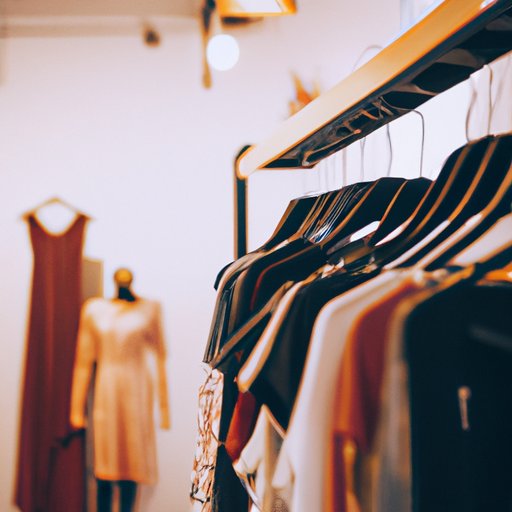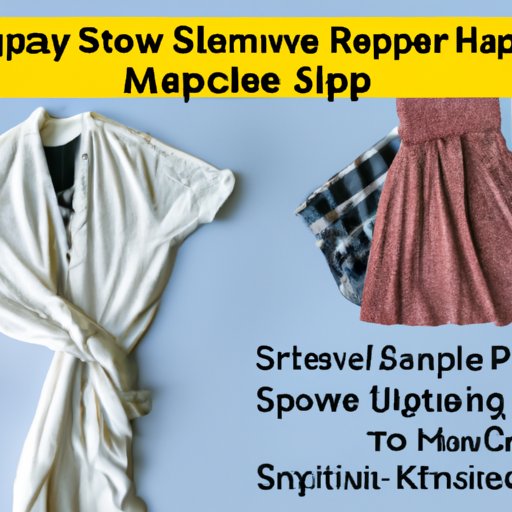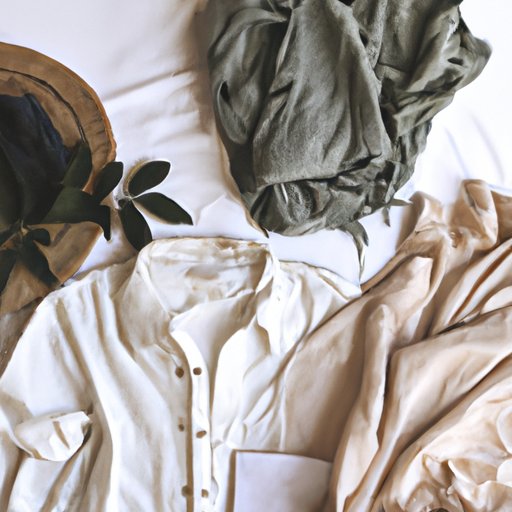Introduction: What Is Slow Fashion?
In today’s world, fast fashion has become the norm. We often purchase cheaply made clothes that are designed to be worn only a few times before they fall apart. But this disposable mindset can have negative consequences for both the environment and people’s wallets. That’s why many people are turning to slow fashion as an alternative.
Slow fashion is an ethical and sustainable approach to fashion that focuses on quality over quantity. Rather than buying multiple items of cheap clothing, slow fashion encourages people to invest in fewer, higher-quality pieces that will last for years. It also emphasizes supporting ethical and sustainable brands that prioritize the well-being of the people making the clothing, as well as the planet.
Section 1: An Overview of Slow Fashion: What It Is and Why We Need It
To understand slow fashion, it’s important to first look at the principles it stands for. Slow fashion is based on the idea of mindful consumption and sustainability. This means being mindful of your purchases and only buying what you need. It also means considering the environmental and social impacts of the clothes you buy, and supporting brands that are transparent about their production processes.
When compared to fast fashion, slow fashion has numerous benefits. As fashion blogger Clare Press explains, “Fast fashion is built on disposability — the idea that clothes are made to be worn once or twice and then thrown away. In contrast, slow fashion is built on quality, not quantity. It’s about investing in timeless pieces that you know will stand the test of time.”1
The environmental impacts of fast fashion are especially concerning. According to the Environmental Protection Agency, the apparel industry is responsible for 10% of global carbon emissions.2 It’s also one of the largest consumers of water and a major contributor to textile waste. By switching to slow fashion, we can help reduce these environmental impacts and start to make a positive difference.
Section 2: How to Incorporate Slow Fashion into Your Wardrobe
Making the switch to slow fashion can seem daunting, but it doesn’t have to be. To get started, here are some tips for transitioning to a slow fashion wardrobe:
- Start by decluttering your closet and getting rid of any clothes you no longer wear.
- Make a list of the pieces you need to fill the gaps in your wardrobe.
- Look for quality pieces made with natural materials like cotton, linen, and wool.
- Choose timeless styles that you can mix and match to create different looks.
- Think about investing in higher-end pieces that will last for years.
When shopping for slow fashion pieces, it’s important to do your research. Look for brands that are transparent about their production processes and use sustainable materials. You can also check out secondhand stores and vintage shops for unique items that won’t break the bank.
If you’re looking to simplify your wardrobe even further, consider creating a slow fashion capsule wardrobe. A capsule wardrobe is a collection of essential pieces that you can mix and match to create multiple outfits. This will help you save money and ensure that all of the pieces in your wardrobe are versatile and timeless.

Section 3: Exploring the Benefits of Slow Fashion
Investing in slow fashion pieces can have numerous benefits, both financially and emotionally. Financially, investing in quality pieces can help you save money in the long run. As fashion designer Eileen Fisher noted, “You really have to pay more for quality, but you’ll end up spending less by not having to replace things as often.”3
On an emotional level, wearing clothes you love can boost your confidence and make you feel good. As lifestyle blogger Lauren Singer explains, “When I wear something I love, it makes me feel happy and confident. I think that when you look better, you feel better. And when you feel better, you can do better.”4
Finally, there are the environmental benefits of reducing our consumption. By investing in fewer, higher-quality pieces, we can help reduce the amount of textiles that end up in landfills. We can also support sustainable brands that are focused on minimizing their impact on the planet.

Section 4: Ethical Brands Leading the Slow Fashion Movement
There are many ethical and sustainable brands leading the slow fashion movement. These brands are committed to using sustainable materials and ethical production processes. Here are just a few of the top ethical brands leading the way:
- Everlane: Based in San Francisco, Everlane is a certified B Corp that uses 100% renewable energy and recyclable packaging. They also have a strict no-sweatshop policy and are transparent about their factories and wages.
- People Tree: People Tree is a Fair Trade certified brand that works with artisans in developing countries. They use natural and organic materials, and they’re committed to providing fair wages and safe working conditions.
- Patagonia: Patagonia is a leader in the outdoor apparel industry. They use recycled and organic materials, and they donate 1% of their profits to environmental causes.
These brands are just a few examples of those championing the slow fashion movement. By supporting them, we can help create a more sustainable and ethical fashion industry.

Section 5: DIY Projects: Upcycling Clothes for a Slow Fashion Look
DIY projects are another great way to embrace slow fashion. Upcycling is the process of taking old clothes and transforming them into something new. You can use upcycling to give your existing clothes a fresh look, or you can shop secondhand stores and find unique items to upcycle. Either way, upcycling is a fun and creative way to create a slow fashion wardrobe.
If you’re looking for ideas, here are some creative ways to upcycle clothes:
- Turn an old t-shirt into a cute crop top.
- Cut jeans into shorts or a skirt.
- Embellish a plain shirt with patches or embroidery.
- Add a ruffle to the bottom of a dress.
- Dye a white shirt or pair of jeans to give them a new look.
Upcycling can be a great way to express your creativity and give new life to old clothes. All you need is a few basic tools and a little bit of imagination.
Conclusion: Join the Slow Fashion Movement
Slow fashion is an ethical and sustainable approach to fashion that focuses on quality over quantity. By embracing slow fashion, we can help reduce our environmental impacts, save money, and wear clothes that make us feel good. There are many ways to incorporate slow fashion into your wardrobe, from investing in quality pieces to upcycling old clothes. Plus, there are many ethical brands leading the slow fashion movement that are worth supporting.
So if you’re ready to join the slow fashion movement, now’s the time to get started. Every small step counts, and together we can make a big difference.
(Note: Is this article not meeting your expectations? Do you have knowledge or insights to share? Unlock new opportunities and expand your reach by joining our authors team. Click Registration to join us and share your expertise with our readers.)
